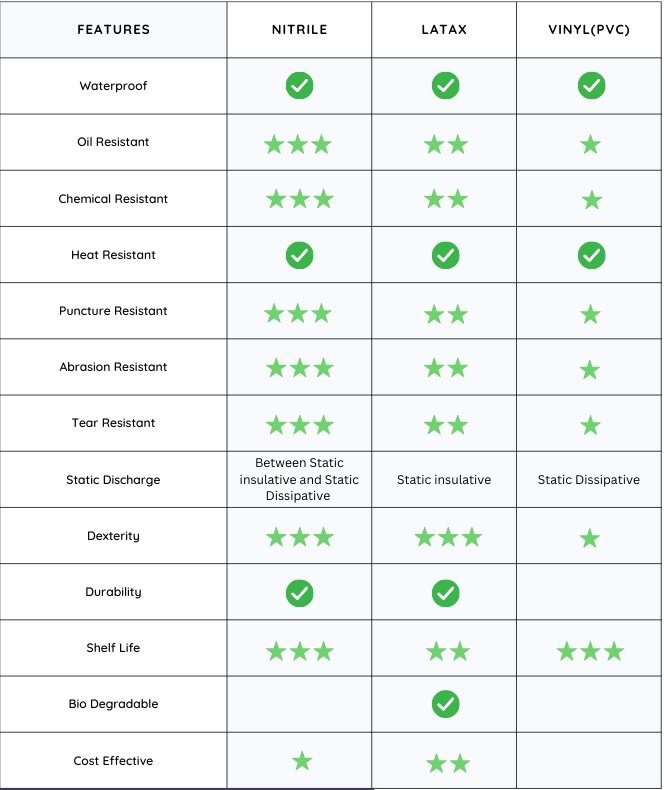When it comes to choosing the right gloves for your needs, it can be a bit overwhelming to navigate the different options available. There are three main types of gloves that are commonly used in different industries – nitrile, latex, and vinyl gloves. Each of these gloves has its benefits, drawbacks, and specific uses. In this article, we’ll go through each type of glove and help you understand the differences between them.

Nitrile gloves are made from synthetic materials and are often used in medical settings. They offer a high level of resistance to punctures, tears, and chemicals, making them a great choice for medical professionals who work with hazardous materials. Unlike latex gloves, nitrile gloves are not made from natural rubber latex and are therefore less likely to cause allergic reactions in those with latex allergies.
Another advantage of nitrile gloves is that they are very durable, meaning they offer a longer lifespan than other types of gloves. This makes them a cost-effective solution for those who need gloves for long-term use.
Latex gloves are made from natural rubber latex and are a popular choice in industries such as food service, healthcare, and cleaning. They provide a good level of protection against bacteria and viruses and offer good dexterity and sensitivity. However, they do pose a risk for those with latex allergies, as the proteins in latex can cause allergic reactions in some individuals.
One of the benefits of latex gloves is their tactile sensitivity, which allows for precise movements and the ability to handle small objects. They offer a snug and comfortable fit and are often a preferred choice in medical settings.
Vinyl gloves are made from synthetic materials and are a budget-friendly option for those who need gloves for short-term use. They are not as durable as other types of gloves and are not recommended for use with chemicals or other hazardous materials. However, they are a great choice for use in the food service industry, where they provide a barrier against bacteria and viruses.
One of the advantages of vinyl gloves is that they are free from allergens such as latex, making them a safe choice for those with latex allergies. They are also very lightweight and offer a loose fit, making them comfortable to wear for extended periods.
Key Differences Between Nitrile, Latex, and Vinyl Gloves
The main differences between nitrile, latex, and vinyl gloves come down to their material composition and specific uses. Nitrile gloves are made from synthetic materials and offer superior protection against punctures, tears, and chemicals. Latex gloves are made from natural rubber latex and provide good sensitivity and dexterity. Vinyl gloves are made from synthetic materials and are a budget-friendly option for short-term use.
Another key difference is the risk of allergic reactions. Nitrile gloves are less likely to cause allergic reactions than latex gloves, making them a safer choice for those with allergies. Vinyl gloves are also free from allergens such as latex, but they are not as durable as other types of gloves.
When it comes to specific uses, nitrile gloves are often used in medical settings and industries that require protection against hazardous materials. Latex gloves are commonly used in healthcare and food service industries and are preferred for their tactile sensitivity. Vinyl gloves are often used in the food service industry and for short-term, low-risk applications.
When choosing the right gloves for your needs, it’s important to consider the specific uses and benefits of each type of glove. Nitrile, latex, and vinyl gloves all have their advantages and drawbacks, and understanding the differences between them can help you make an informed decision. Whether you need gloves for medical settings, food service, cleaning, or other applications, there is a glove option out there that will meet your needs.
